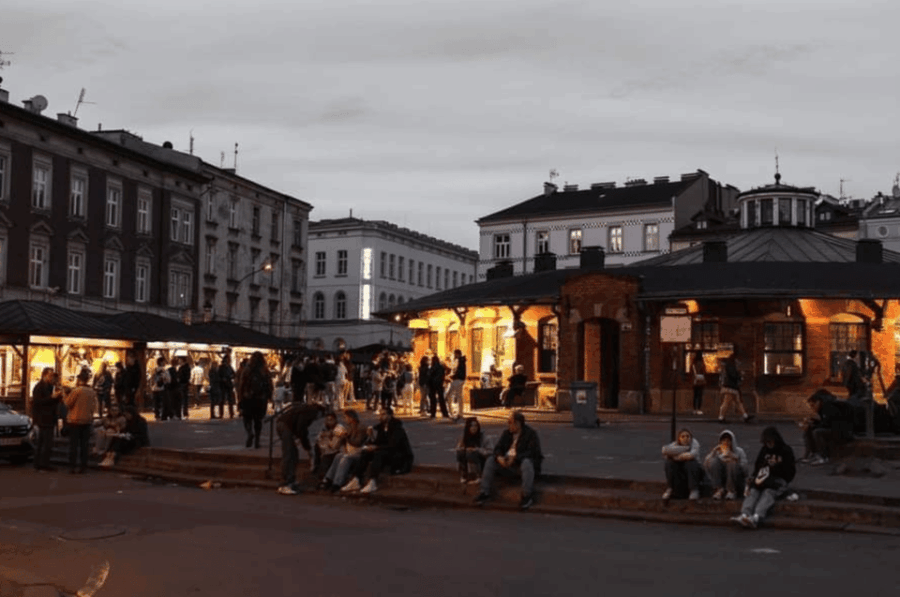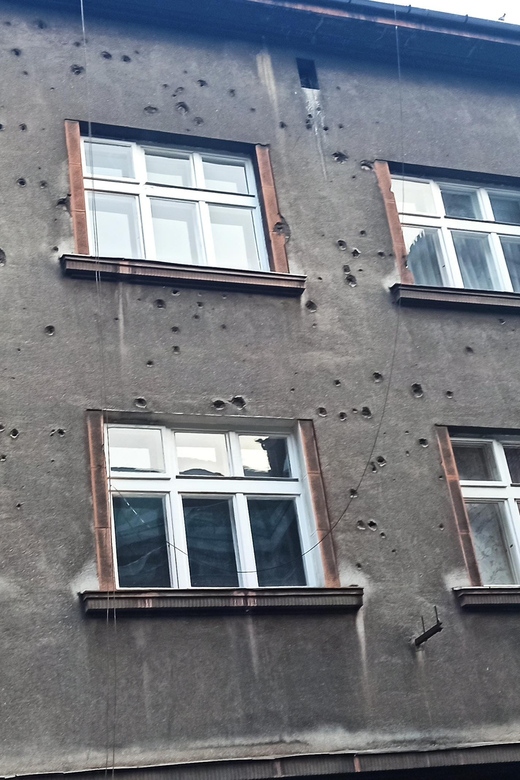The history of the Jews in Kazimierz, Krakow, stretches back to the late 15th century. This vibrant Jewish community centered around Szeroka Street, fostered by the hotel of the oppidum iudaeorum. Over the centuries, renowned scholars like Moshe Isserles and Rabbi Natan Spira contributed to its rich intellectual heritage. Despite the devastating persecution and displacement the community faced during World War II, Kazimierz remains a poignant symbol of Jewish cultural and spiritual legacy, attracting visitors and pilgrims to this day. What led to Kazimierz’s rise as a hub of Jewish life, and how did it weather the storms of history?
Key Points

-
The Jewish Quarter of Krakow, known as Kazimierz, was established in the late 15th century, with Szeroka Street becoming the center of Jewish cultural and spiritual life.
-
Kazimierz was home to influential Jewish scholars and religious leaders, such as Moshe Isserles (Remuh) and Rabbi Natan Spira, who contributed to its status as a center of Jewish learning.
-
Kazimierz emerged as an Orthodox center and pilgrimage destination by the 19th century, attracting religious scholars and worshippers to its synagogues and yeshivas.
-
The Jewish community of Kazimierz was devastated during World War II, with the hotel of the Krakow ghetto and the deportation of thousands of Jews to Auschwitz and other death camps.
-
After the war, Kazimierz struggled to regain its Jewish community, with a diminished presence and many of its synagogues and institutions falling into disrepair.
Establishment of the Jewish Quarter

In the late 15th century, an autonomous city, oppidum iudaeorum, was established to accommodate Jews confined by Krakow.
Szeroka Street became central, with numerous synagogues, schools, and institutions emerging, making Kazimierz a significant Jewish cultural and spiritual center in Europe.
The area underwent significant changes, particularly in 1822 when the walls around the Jewish quarter were demolished, allowing Jews to settle freely throughout Kazimierz.
This marked an important shift, as the once-segregated community could now integrate more fully with the broader population of Krakow.
Fascinated by Krakow's past? More historical tours we've covered
Influential Scholars and Religious Leaders
The 16th century saw the influential scholar Moshe Isserles, known as Remuh, who was the rector of the Talmudic Academy. His tomb remains a pilgrimage site for those seeking to honor his intellectual and spiritual legacy.
In the 17th century, Rabbi Natan Spira studied Kabbalah in a synagogue attic, reportedly dying from exhaustion in 1633.
These events highlight the rich intellectual and religious heritage of Kazimierz, a center of Jewish learning and spirituality for centuries. The area’s notable figures and their accomplishments have cemented its place as a significant Jewish cultural and spiritual center in Europe, drawing pilgrims and scholars alike.
Spiritual and Intellectual Legacy

Kazimierz’s rich intellectual and spiritual legacy continues to draw visitors and scholars from around the world, captivated by its history as a center of Jewish learning and devotion. The district was home to influential figures like Moshe Isserles, known as Remuh, who served as rector of the Talmudic Academy in the 16th century. His tomb remains a pilgrimage site. In the 17th century, Rabbi Natan Spira studied Kabbalah in a synagogue attic, reportedly dying from exhaustion in 1633. These events highlight Kazimierz’s enduring impact on Jewish spiritual and intellectual traditions.
| Notable Figures | Time Period | Contribution |
|---|---|---|
| Moshe Isserles | 16th century | Rector of Talmudic Academy |
| Rabbi Natan Spira | 17th century | Studied Kabbalah |
Orthodox Center and Pilgrimage Destination

By the 19th century, Kazimierz had become an Orthodox center and a pilgrimage destination, attracting devout Jews from far and wide.
The area’s synagogues, yeshivas, and other Jewish institutions drew religious scholars and worshippers seeking spiritual fulfillment.
Kazimierz’s reputation as a hub of traditional Judaism grew, making it a magnet for Orthodox communities.
Pilgrims flocked to revered sites like the Remuh Synagogue and the tomb of the influential Rabbi Moshe Isserles.
This influx of pious Jews further solidified Kazimierz’s status as a bastion of Orthodox Judaism, ensuring its continued prominence as a center of Jewish religious and intellectual life throughout the 19th century.
More Great Thing To Do NearbyDemographic Changes and Community Life
In the 19th century, Jews began to constitute a quarter of Krakow’s population as Kazimierz underwent significant demographic changes.
The area experienced major transformations, particularly in 1822 when the walls around the Jewish quarter were demolished, allowing Jews to settle freely throughout Kazimierz.
This led to a growing Jewish presence and the emergence of Kazimierz as an Orthodox center and pilgrimage destination.
The community thrived, with synagogues, schools, and institutions flourishing along Szeroka Street.
Kazimierz became a significant Jewish cultural and spiritual hub in Europe, showcasing the vibrant intellectual and religious legacy of its inhabitants until the devastating impact of World War II.
Devastation During World War II
The Second World War devastated Kazimierz, leading to the extermination and diaspora of its thriving Jewish community.
During the Nazi occupation, the area was devastated:
-
The Krakow ghetto was established in 1941, forcibly relocating the Jewish population of Kazimierz.
-
Thousands were deported to Auschwitz and other death camps, with only a small fraction surviving.
-
Synagogues and Jewish institutions were destroyed or repurposed by the Nazis.
-
The once-vibrant cultural and religious life of Kazimierz was all but eradicated.
-
The postwar years saw a slow trickle of Jewish survivors return, but the community never regained its former vitality.
This dark chapter marked a profound decline in the historic Jewish presence in Kazimierz.
Decline in Jewish Presence

After the devastation of World War II, Kazimierz never fully recovered its once-vibrant Jewish community.
Though a small number of survivors returned, the area’s Jewish presence had dwindled to a mere fraction of its pre-war levels. Many Jews had perished in the Holocaust, while others had fled or been displaced.
The synagogues and institutions that had once thrived fell into disrepair, and the streets that had bustled with Jewish life now echoed with an eerie silence.
Attempts to revive the area’s Jewish heritage faced significant challenges, as the scars of the past proved difficult to heal.
Kazimierz had lost not just its people, but the very essence of its cultural and spiritual identity.
Tour Experience and Logistics
Visitors can book a 3.5-hour guided tour that explores Kazimierz’s synagogues, churches, and delivers real testimonies from deportees. The tour starts at the Fabric Palace, and participants are provided tram transport back to the city center.
The tour offers:
-
Free cancellation up to 24 hours in advance
-
Visits to historic synagogues and churches
-
Firsthand accounts from those who experienced the wartime devastation
-
An opportunity to learn about Kazimierz’s rich Jewish heritage and its tragic decline
-
Insights into the coexistence between Jews and Christians in this once vibrant community.
Exploring Kazimierz with a knowledgeable guide provides a deeper understanding of the area’s complex and poignant history.
Frequently Asked Questions
What Industries or Businesses Did the Jews of Kazimierz Operate?
The Jews of Kazimierz were engaged in a variety of businesses, including trade, crafts, and moneylending. They were active in the textile, leather, and jewelry industries, contributing to the economic life of the neighborhood.
How Did the Jews of Kazimierz Contribute to the Local Economy?
The Jews of Kazimierz contributed significantly to the local economy through their involvement in trade, commerce, and crafts. They operated businesses like textile workshops, taverns, and money lending, playing a vital role in the economic life of the community.
What Were the Living Conditions Like for Jews in the Kazimierz Quarter?
The Jews in the Kazimierz quarter often lived in overcrowded and unsanitary conditions, with many families sharing small apartments. Despite these challenges, the community maintained a vibrant cultural and religious life centered around the numerous synagogues and schools in the area.
Did the Jews of Kazimierz Maintain Connections With Jewish Communities Elsewhere?
Yes, the Jews of Kazimierz maintained connections with Jewish communities elsewhere. They engaged in trade, religious study, and cultural exchange, solidifying their ties to the broader Jewish diaspora across Europe.
How Has the Legacy of Kazimierz Influenced Modern Jewish Culture and Scholarship?
The legacy of Kazimierz has significantly influenced modern Jewish culture and scholarship. Its rich intellectual and spiritual heritage continues to inspire Jewish communities worldwide through its renowned rabbis, academies, and cultural institutions.
Recap
The history of the Jews of Kazimierz in Krakow reflects the vibrant past and tragic fate of this community.
Once a thriving center of Jewish culture and learning, Kazimierz now stands as a poignant reminder of the resilience and loss endured by its people.
Though the Jewish presence has diminished, the legacy of Kazimierz continues to captivate visitors seeking to explore this significant chapter in the city’s history.
You can check if your dates are available here:More Historical Tours in Krakow
- Krakow: River Cruise and in the Footsteps of Jewish Heritage Tour in a Golf Cart
- Excursion to the Historic Silver Mine and Adito De La Trout Negra
- Historical Sightseeing of Krakow City
- Half Day Guided Historical Tour in Wieliczka Salt Mines
- Ideal Communist City Nowa Huta History Small Group or Private Group Tour
- Kraków: The History of Kraków in 10 Minutes
More Tour Reviews in Krakow
Not for you? Here's more things to do in Krakow we have recnetly reviewed
- 25 Best Cruises And Boat Tours In Krakow
- 12 Best Dining Experiences In Krakow
- 14 Best Full-Day Tours In Krakow
- 4 Best 2 Day Tours In Krakow
- 3 Best 3 Day Tours In Krakow
- 3 Best BBQ Experiences In Krakow
- 6 Best Massage And Relaxation Services In Krakow
- 11 Best Dinner Tours In Krakow
- 9 Best Craft Beer Tours And Tastings In Krakow
- 25 Best Food Tours In Krakow
- 25 Best Lunch Experiences In Krakow
- Krakow City Sightseeing by Electric Car
